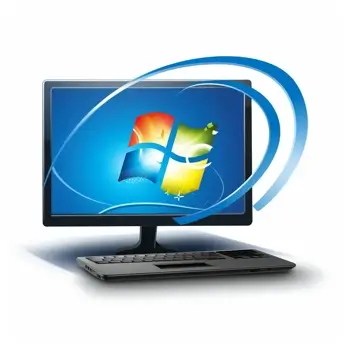How to Change My IP Address: A Step-by-Step Guide
Online trackers monitor everything from your posts to your searches. This includes your IP address, which is essential for connecting to the Internet. However, using methods to switch or hide your public IP address can provide an additional measure of privacy online. In this article, learn how to change your IP address on any device to maximize your privacy online.
What is an IP address?
An IP address is a special set of numbers given to any device connected to a network.. The address identifies the device and allows it to communicate on an internal or external computer network.
Your IP address isn't permanent, though. A governing body, typically your Internet service provider (ISP), assigns it to you. Your address can change based on your connection and the network you choose to connect to.
Some people hide or change their IP address to protect their online identity. An IP address can reveal information such as location and Internet speed.
How can I find my current IP address?

Before you change your IP (Internet Protocol) address, you can check your current IP address. Visit the What Is My IP homepage. You can view your current IPv4 and IPv6 addresses, along with your Internet service provider and IP geolocation.
However, there are two types of IP addresses: public and private. This won't show your private IP address. That address identifies your device only within its network. You can find that address in your device's settings.
Why should I change my IP address?
As established, an IP address is a unique identifier assigned to each device connected to the Internet. Changing your IP address can help protect your online identity, access geo-restricted content, and enhance digital security.
You can change your IP address in various ways. One option is to use a VPN. Another option is to use proxy servers. You can also use the Tor browser.
Additionally, you can contact your ISP for assistance.
Ultimately, the number one reason to change or hide your IP address is to increase your privacy as you use the Internet. If you want to keep your online activity private, changing your IP address can help.
It can also help you avoid Internet service provider tracking. This can protect sensitive information. It also offers the following benefits.
Strengthened security
Changing or hiding your IP address is a great way to protect yourself from hackers. This is especially true when connecting to unsecured networks such as public WiFi. It also helps protect your information in potential data breach situations.
Ability to bypass content restrictions
Getting a different IP address lets you bypass government or local network restrictions and access blocked content online. Netflix, for example, provides different content for different countries. Changing your IP address to a different Netflix region allows you to access the content you wouldn’t normally see from your home country.
Ability to avoid website bans
Most websites compile their banned or blocked users by their IP addresses. Some users receive site bans or find their IP address on an IP blacklist. Getting a new IP helps you move around the bans to access the sites you’re trying to get to.
All of the above help improve your online experience and offer privacy benefits. If you're wondering if you should change your IP address to boost your online privacy, the answer is yes. Though it's not necessary for all users, it will make your browsing experience much more secure.
How to change your IP address
There are several ways to change or hide your IP address. This includes a few ways to do it for free, like through the Tor browser or with public WiFi. However, these three ways are the best options. Learn how to change your IP using a VPN, proxy, or router to decide which method is best for you.
Use a virtual private network (VPN)

The best and most secure way to change your IP address is with a VPN. When you connect to a VPN, it uses secure tunneling techniques to transfer data to other servers. Then, it arrives at your intended destination.
This means that the process essentially replaces your IP address with another IP address. The entire process encrypts your data, meaning using a VPN to switch your IP doesn't put your data at risk
To stay safe online, pay for a VPN instead of using a free one. Free VPNs can gather your data and may have security issues. Regardless of your VPN service, check to see if they keep IP address logs. If you’re trying to change or hide your IP, it’s preferable that the VPN service not keep logs of your IP.
Creating a VPN on your device is easy. After setting it up, you can browse privately with a new IP address.
Use a proxy
If you want to know how to switch your IP address without VPNs, a proxy is a good alternative. With a proxy, your traffic moves through a server before reaching its destination. Websites you visit see the proxy server’s IP address rather than your actual IP address. This keeps your real IP address private.
Proxies are easy to use and cost little, which makes them a popular choice. They also require no software changes to your device upon installation.
Once you set up your proxy in your browser, you can use a proxy check tool to ensure that it is fully functioning.
Use Tor or another private browser
If you don't want to use a VPN or proxy to change your IP, you can use Tor or another private browser. Tor, also known as the Onion Router, automatically masks your IP address during a session to avoid user tracking. The browser reroutes each connection through its own servers, hiding your connection and keeping your Internet activity anonymous.
The browser also doesn't log your activity or the sites you visit online. Your connection is private, and so is your IP address.
Do it manually
You can also switch your IP manually by adjusting your device’s settings. However, the easiest method to get a newly assigned IP address automatically is through your router. Unplug your router on your home network. Once you plug it back in, the DHCP server from your ISP may assign your router a new IP address.
However, note that the time you must keep your router unplugged varies depending on your IP lease time. The necessary time ranges from minutes to hours, depending on the lease.
It’s possible your ISP could end up assigning you the same IP address if they use a dynamic IP address system. However, this is the easiest method to change your IP manually. This method also doesn’t include the same level of privacy as a VPN or proxy.
How to change IP address on Mac computers
To learn how to change IP addresses on a Mac, follow these steps.
- Go to the Apple menu in the top left corner of the screen.
- Go to System Settings.
- Click Network.
- In the left column, click your network. Click Details.
- Select the TCP/IP tab.
- Under Configure IPv4, select Manually.
- Enter your new IP and hit OK.

How to change IP address on Windows computers
To change your IP address on a Windows device, follow these steps.
- Click the Start menu and go to Settings.
- Choose Network & Internet.
- Select WiFi and choose Manage known networks. Choose the network that you want to adjust.
- Next to the IP assignment, click Edit.
- Choose Manual. Toggle on IPv4 and enter the IP address, then click Save.
How to change IP address on iPhones or iOS devices
To change your IP address on an iPhone, iPad, or iPod, follow these steps:
- Go to the Settings on your iPhone, iPad, or iPod.
- Tap WiFi.
- Choose your network.
- In the IPv4 section, tap Configure IP.
- Choose Manual and enter your new IP address.
How to change IP address on Android phones
To change your IP address on an Android device, follow these steps:
- Go to your Android settings.
- Tap Wireless & Networks.
- Go to the WiFi section.
- Tap and hold your WiFi network.
- Tap Modify Network.
- Expand or go to the Advanced options.
- Change your Android’s IP address in the IP settings from DHCP to Static.
Frequently asked questions
Can I change my IP for free?
Yes, you can change your IP address for free. Though VPNs and reliable proxies cost money, altering your IP address by manually by unplugging your router costs nothing. Furthermore, the instructions above for changing IP addresses on phones, PCs, and other iOS devices are free. To learn how to switch IP addresses free of charge, read over those instructions for your device.
Can I change my IP address myself?
Yes, you can change your IP address yourself. You can generate new IP addresses using a VPN, proxy, or router or log into your device’s settings through the steps above.
Does my IP address change automatically?
It will change automatically if you have a dynamic IP address assigned to you through your Internet service provider. However, if you have a static IP address, it won't change automatically.
Is it legal to change my IP address?
Yes, it is completely legal to switch your IP address. Many Internet users switch their IP addresses for several reasons. They may have safety concerns, want to test websites or apps, or need to protect their own privacy. Getting a new IP address, whether on your own or through a VPN or proxy, is not illegal.
How often should I change my IP address?
Most users don't need to change their IP addresses regularly. If you want to change yours, you can change it every few months or weeks; however, if you have a dynamic IP, your IP will change on its own.